
Schinopsis lorentzii is a species of flowering plant in the family Anacardiaceae.

August Heinrich Rudolf Grisebach was a German botanist and phytogeographer.

Malpighiaceae is a family of flowering plants in the order Malpighiales. It comprises about 73 genera and 1315 species, all of which are native to the tropics and subtropics. About 80% of the genera and 90% of the species occur in the New World and the rest in the Old World.
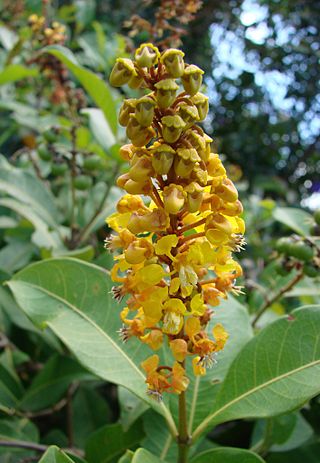
Byrsonima is one of about 75 genera in the Malpighiaceae, a family of flowering plants in the order Malpighiales. In particular in American English, they are known as locustberries. Another widely seen common name is serrets or serrettes.
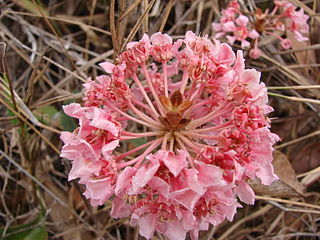
Pterandra is a genus in the Malpighiaceae, a family of about 75 genera of flowering plants in the order Malpighiales. Pterandra comprises 15 species of trees, shrubs, and subshrubs, all but two native to South America, principally Colombia, Venezuela, and Brazil; the exceptions are from Panama. There are only some ornamental plants introduced in China, and there are no native varieties.
Malpighiodes is a genus in the Malpighiaceae, a family of about 75 genera of flowering plants in the order Malpighiales. Malpighiodes comprises 4 species of woody vines native to northern South America. They are found in northern Brazil, French Guiana, Guyana, Suriname and Venezuela.
Athyana is a monospecific genus of plant in the family Sapindaceae, containing only Athyana weinmannifolia. It is found in Argentina and Bolivia. It is threatened by habitat loss.
Loxopterygium grisebachii is a species of plant in the family Anacardiaceae. It is found in Argentina and Bolivia. It is threatened by habitat loss.
Reynosia is a genus of plant in family Rhamnaceae. Darlingplum is a common name for this genus.
Tabernaemontana wullschlaegelii is a species of flowering plant in the family Apocynaceae. It is endemic to Jamaica.
Diacidia is a genus in the family Malpighiaceae. It comprises 11 species of trees, shrubs, and subshrubs. Ten species are found on the mountains of southern Venezuela and adjacent Brazil; one species is widespread in the drainages of the Rio Negro and the Río Vaupés in Venezuela, Colombia, and Brazil.
Blepharandra is a genus in the family Malpighiaceae. It comprises 6 species of trees and shrubs native to sandy savannas and scrub forests of Guyana, southern Venezuela, and Amazonian Brazil.
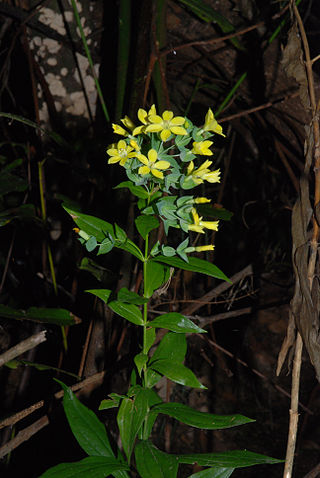
Ixanthus is a monotypic plant genus in the family Gentianaceae. The sole species, Ixanthus viscosus, is endemic to Canary Islands laurel fields and displays small yellow flowers when in bloom.
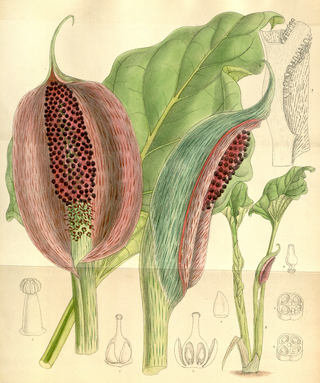
Synandrospadix is a monotypic genus of flowering plants in the family Araceae. It comprises a single species Synandrospadix vermitoxicus. It is found in Peru, Argentina, Paraguay, and Bolivia. The inflorescence has an unpleasant smell with a spathe whose inner surface is purple with brownish-green warts and a smooth green outer surface. The spadix is egg shaped, red, and has spiked male flowers protruding from it.
Dicella is a genus of flowering plant in the familyMalpighiaceae. It includes seven species, assigned to two sections. Section Dicella comprises D. bracteosa and D. nucifera, found in southeastern Brazil and adjacent Paraguay and Argentina. Section Macropterys includes D. aciculifera, known only from Costa Rica, and D. conwayi, D. julianii, D. macroptera, and D. oliveirae, all of South America from Colombia south to about 19°S
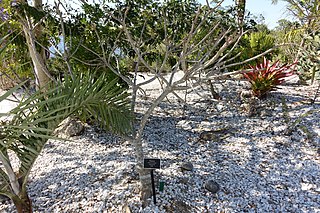
Plumeria clusioides is a species of flowering plant in the family Apocynaceae. It is endemic to the Island of Cuba.
Haenianthusis a genus of flowering plant in the family Oleaceae. It is native to the Greater Antilles of the Caribbean. It contains 3 species:
- Haenianthus incrassatus(Sw.) Griseb. - Jamaica
- Haenianthus salicifoliusGriseb. - Cuba, Hispaniola, Puerto Rico
- Haenianthus variifoliusUrb. - Cuba

Rhynchocorys is a small genus of flowering plants belonging to the family Orobanchaceae. It was formerly classified in the family Scrophulariaceae.
Tetralix is a genus of flowering plant in the mallow family Malvaceae. It is native to Cuba. Members of the genus are adapted to serpentine soils, and are nickel hyperaccumulators.
Mionandra is a genus of flowering plants belonging to the family Malpighiaceae.








